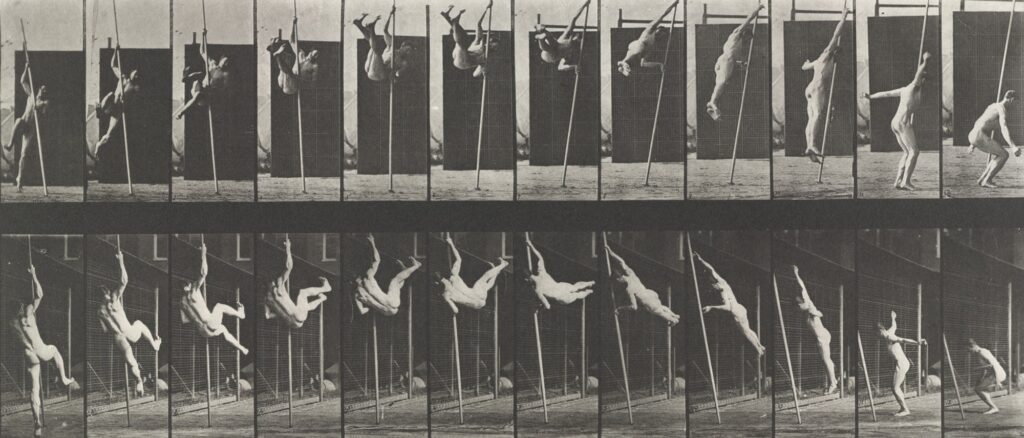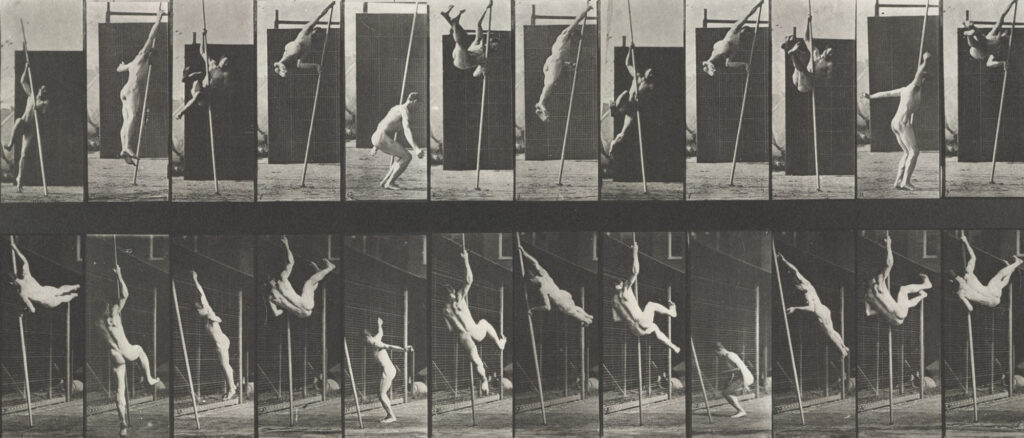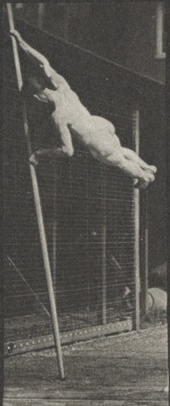



Breaking the Linear Narrative – Photographs and Time as Unique Constellations of Nows
It is a common idea that time is a simple linear phenomenon. What happens in this moment, happens now and what happened yesterday occurred before today. Tomorrow is unknown to us, and is always ahead of this very moment. The present moment is somewhere in between the entities, that are defined as past by memory, and as future by our imagination. In the linear concept of time, time flows relentlessly forward, as we are part of a stream and the present moment is constantly escaping us. Events are placed on a timeline that resembles an arrow that is pointing forward. In his book, The Order of Time, theoretical physicist Carlo Rovelli explains that the second law of thermodynamics defines the direction of time, where entropy increases in an isolated system over time, rather than decreases. He discusses the nature of time as a state of entropy within the universe, once an item is dropped, it does not rebuild itself. In the microscopic level, this difference between past and future does not exist. He wrote that it is our observation that is blurred. Some of the influential photo theory has adapted to the idea that time is simply a linear phenomena, as experienced in the human mind. In the linear narrative, photographs are capable of stopping the flow and freezing the ever-unreachable stream that is constantly escaping us. Hence photographs have been connected to both death and eternity. Boundary phenomena such as time are very rarely questioned in photo theory.
We keep records and archives, through which we define our position in a geological time line, and in relation to each other, but we do this also to keep track of time. We have started to take these histories and archives as affirmations about our ideas of the ontology of time. However, philosophers and scientists have never agreed on what time is and how it is manifested in our lives as the multitude of different contemplations show across different traditions. Rovelli wrote that from a physics perspective, in its most fundamental level, time functions quite differently compared to what our everyday experiences of time are. Photo theory has often had the linear-time approach when the relationship of time and photographs has been contemplated and this can limit our understanding of the topic. In terms of photography, I do not believe it is essential to debate the different theories about time (which one of them might be more accurate than another), but what can broaden our understanding in terms of time and photography, is to implement some of the strategies that both philosophers and scientist use to contemplate time’s qualities. Time can be contemplated from a multitude of viewpoints, and it is an over-simplification to only talk about the linear flow and to regard photographs as arrested moments of that flow.
Even though especially science today is concerned with questions related to time, little of this diverse thinking is appearing in photo theory. The idea that time is a linear phenomenon as experienced in the human mind, is ubiquitous in photo theory. From observing some of the canonical photo theory that have built upon our ideas on time and photography, I found that they repeat some branches of phenomenological philosophy, without even considering other ideas.
Many of the following contemplations on time and photography are derived from the thinking that Roland Barthes introduced in Camera Lucida. As a semiotic, he was both ambiguous about time but also relayed his arguments to some branches of phenomenology, without giving a detailed context to his contemplations about time and photography. For Barthes, photography had the miraculous ability to arrest the so-called flow of time. Quoting the founder of phenomenology, Edmund Husserl, he wrote:
Like the real world, the filmic world is sustained by the presumption that, as Husserl says, “the experience will constantly continue to flow by in the same constitutive style”, but the Photograph breaks the ‘’constitutive style” (this is its astonishment) ; it is without future (this is its pathos, its melancholy) in it, no protensity, whereas the cinema is protensive, hence in no way melancholic (what is it, then? – It is simply “normal,” like life).
What is often seen essential in photo theory now, is Barthes’s idea that photographs represent something having been there. In Camera Lucidathe photograph is a referent to another moment and because it is based on reality that has once been an existing moment, the impact of photography is so distinct. It could be said that this has generally been adapted as the way we think about photography’s relation to time: Photography freezes the flow of time (our experience of it). It freezes something that would be otherwise lost.The way it is described is also often peculiar, all though we are experiencing the flow, it is somehow distant to us, as if we are separated from our own experiences. Both in western philosophical tradition (Martin Heidegger – Dasein) and in eastern philosophy (Dōgen Zenji – Shobogenzo Uji), time has been linked with existence, they saw being essential when thinking about the ontology of time. In photo theory the flow jargon is often accompanied by romanticized ideas about the medium, especially the apparatus itself, the camera. Seeing time as flowing forward is only one idea in philosophy of time or in natural sciences. Both have debated over qualities that we link to time, for example: being, nows, linearity, memory, entropy, ontology of time, durée, flow, the relationship of past, present and future, infinity, measuring time, simultaneity, successive order, multiplicity etc.
From all the aforementioned topics, there is no general consensus about the ontology of time especially in philosophy. All though photo theory generally uses one idea, that of time being a simple linear phenomenon, it is often visible in the comments that highlight photography’s assumed ability to arrest the so-called flow.
Photographs in themselves are actually quite objective when it comes to time. Photographs inhabit clues that make the different views on time fruitful for contemplation, and that is actually something that can be said to be an overlooked quality of the photograph. Through researching different time views and as a practicing photographer, I propose that photographs are not frozen moments of time, but photographs can be seen as a manifestation of time, that offer a great platform to contemplate time. It is precisely the difference of our experiences, and the static characteristics of photographs that ignite the imagination. Individual photographs do not construct narratives entangled with memories and associations in a line of events. We create a constructed reality that simulates the way our minds seem to experience things. We project our own preconceptions and experiences of time when we contemplate photography’s relation to time. One example could be how culture affects our reading, whether our view of time is linear or cyclical.

But if we look at the individual photographs, nothing within them contains evidence of the linearity or flow. It becomes more convincing when the sequence is re-organized (FIG 2). In 1999, British physicist Julian Barbour introduced his theory on time that challenged the idea of time as a linear sequence. Barbour argued that instead of time being a linear sequence of instans, our perception creates an illusion of it. He called instants of time unique constellations of nows and used three-dimensional snapshots as examples. At any given instance, he claimed that we see all things in the universe in different arrangements, but nothing in the known facts prove that they are in a linear sequence. He saw that these constellations are perfectly static, and timeless, both adjectives that could be said to describe the ontology of photographs. Rovelli argues that time is not illusory as Einstein remarked, but time as a phenomenon in its fundaments, is not what it seems. According to Rovelli, physics has proved that there is no one present in the universe, time passes at a different pace in different parts of the universe. Their thoughts are interesting in relation to photographs because the individual photographs appear as different instants, but in themselves, they do not contain evidence of flow, or linearity. Photographs do not exclude the possibility of different presents. Wireless networks have enabled us to share the different presents we experience. Rovelli finds that what is most definite about time is that it is measured in terms of changes, idea that Aristotle introduced. He wrote about how clocks’ measurement of time is in relation to other clocks.

Interestingly, if you look at the scattered sequence for a while, your brain actually starts to find the movement, or make up the sequence once you have seen that there is a sequence of movement from these individual photographs. It could be because it is useful for us to recognize patterns and when something is familiar to us, it is harder to forget that and see outside the box, so to speak.
Photographs capture the visual two-dimensional appearances of the possible configurations, Julian Barbour calls nows.In relation to other photographs, they do not construct a linear time line but another type of connection, as I will show further on. Single photographs themselves do not show the linearity of time, but our stories, projections and metadata attached to them does.


All the prints in the Muybridge series are marked with successive numbering: 1,2,3,4,5. and so on. Those numbers are visible in the bottom left part of the photographs. This is what I mean when I say we attach stories and metadata to the photographs. The numbering is one way to define the sequence that is not inherently present in the individual photographs. We are partly constructing the sequence. Barbour noted this by saying that we think yesterday is before today because we have memories of it and that objectively, nothing in the known facts indicates that. The experience of flow is dependent on memory, if we did not remember, melodies would not make any sense. But photographs are not melodies, they do make sense individually as moments. Many artists throughout history have preferred to express through the static: our collections of art are full of static compositions of events and emotions. The static can be very powerful in condensing what we find important. It could be said that even though we seem to experience time as a flow, we have always been aware of the static. But how would the relationship of photographs be to each other if we were to think about them outside of the linear or chronological narrative? Rovelli wrote: The world without time variable is not a complicated one. It’s a net of interconnected events, where the variables in play adhere to probabilistic rules which, incredibly, we know a good part how to write.
Instead of linear time line of events, imagine a sphere where there are multiple points and all the points are photographs. In relation to each other, they appear as equal objective constellations of possibilities. As we know from geometry, any point on a sphere can be the starting point, there is no definite start as there would be on a line if we would read it from left to right. Rovelli explains that physics has found that when we look close enough, the existence of past, present and future does not exist. Imagine holding the sphere on your hand, when you turn the sphere each photograph is in a different point, but they are not before this, or after that but stand as individually connected to each other by the surface of the sphere. Time is the instant. The sphere is a container, where all possibilities exist and occur as photographs.Instead of those photographs becoming resemblances of death and history, they become alive, equal, existing windows to different moments. Photographs then, can become more independent and connected. If we think of photographs without the linear and see the archive without chronology, the images themselves become more objective and their connection to each other is emphasized by the equality of the moments in relation to each other. The Internet can be seen as one big sphere, a container where these images exist without a strict chronology, instead they are in connection to each other with variables other than time – for example hashtags.
It was difficult to find different variation in time views in photo theory, even in recent publications. Most of them repeated the same ideas of the flow and cuts to the duration that the photograph supposedly does. I found an interesting deviation from the norm, perhaps from a somewhat surprising context. In an article about telecommunication and mobile phone photographs, researcher Mikko Villi addresses how photograph’s relation between past and present has become less important now, because mobile phone photographs are used to communicate not over time, but distance as smart phones enable the direct sharing of presence through wireless networks. Without underlining the issues of time and photography, I found his article ‘“Hey, I’m here Right Now”: Camera phone photographs and mediated presence’, a step towards seeing photography and time from new perspectives. The technological changes have already challenged us to rethink photographs and their position. The relationship of time and photographs is also subject to these changes and it is simply not valid anymore to repeat ideas that do not represent the changed landscape and knowledge gained in other fields of academia.
Bibliography:
Julian Barbour, The End of Time: The Next Revolution in Our Understanding of the Universe, London, Phoenix, 2000.
Carlo Rovelli, The Order of Time, Allen Lane, 2018.
Philip Turetzky, Time, London, Routledge, 1998.
Mikko Villi, ‘“Hey, I’m here Right Now”: Camera phone photographs and mediated presence’,
Photographies, Vol. 8:1, 2015, pp. 3-22.